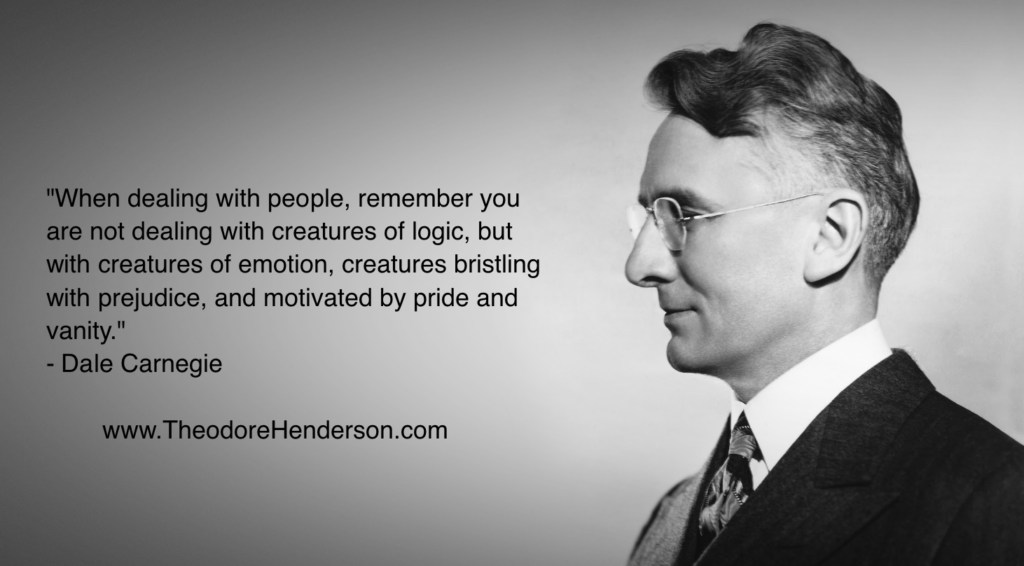Effective Ways To Lead And Manage Difficult Employees
By
Theodore Henderson
The Wisdom Man
One of the most challenging responsibilities of being a manager or leader is handling difficult employees. Not all employees are alike; therefore, a leader’s approach to each of them should be personalized.
What is a Difficult Employee?
Have you encountered a direct report or team member who does not do what he or she is told even if you are the manager? Have you ever had a team member who always put things off for later? Do you have an employee whose mind seems to wander when it is time to be “laser focused”? If your answers to these questions are YES, then you are not alone.
There will come a time when leaders will encounter someone who will disturb the peace in the workplace by doing something unruly or by simply doing nothing. These people are often referred to as difficult employees. They seem to have an issue when it comes to the way they work or lack thereof.
How to Lead and Manage Difficult Employees
Managing difficult employees requires leaders and managers to be both observant and patient. There are many ways to handle a difficult employee. Some of them include:
Determining who is the difficult employee. The first step in dealing with a difficult employee is determining who he or she is. It is important to spot which among your employees causes extreme difficulties in the workplace, so you can start analyzing why that employee is acting up or not doing his or her job. This behavior is different than healthy conflict which is needed in the workplace for progress. More on this point in future posts.
Do not ignore the problem. After determining who is causing the problem, make sure that you do not ignore this person. It is your responsibility as a manager to confront the problem right away. Do not turn the other cheek, as it may escalate into something worse.
Do your research. Conduct research about the employee. This will help you determine the number one cause of the problem. After doing research on the circumstances and researching your employee, it is time to talk to him or her.
Personally handle the problem. Do not let other people attempt to fix the problem for you. You have the title and the authority; therefore, you must be the first one to talk to the difficult employee. In other words, you need to show leadership.
Help the employee. Talking with this person regarding the problem is not enough. As the leader of the team, you must help your employee get back on track. Assisting in the development of emotional intelligence (coaching, mentoring) for him or her may help their ability to have a fresh start and approach regarding his or her work.
If nothing else works, terminate them. If helping the person develop their emotional intelligence for career growth isn’t working, then you have no other choice. Firing an employee is extremely harsh; nonetheless, at times this is the only way to show him or her that you mean business. You are all working for a common goal, which is why every team member should be on board when it comes to doing their job and fulfilling their responsibilities. But as leaders you have group and organization responsibilities, however, one of them isn’t “raising the dead”. Some people for whatever their reason will be against you. Don’t hurt all of your group focusing on one difficult person.
A leader has huge responsibilities and one of them is successfully handling difficult coworkers. As a leader, it is your responsibility to know how to spot the problem and solve it before it worsens.
About The Author
Theodore Henderson is an Amazon best-selling author, Certified Social Media Security Professional Powered by CompTIA, and a CertifiedLeadership Coach. He is the author of the business program for “Launching Your Great Business Idea,” ““The Wisdom Compass”, “9 Simple Strategies to Becoming A Strong Leader” and the Security eBook “30 Smart Ways to Protect Yourself from Cyber Criminals aimed at owners of Smartphones, Mobile Devices, and also those who have significant online activities including Social Media, financial services, etc. He is available for keynotes, seminars, and workshops. He may be reached through www.TheodoreHenderson.com.


